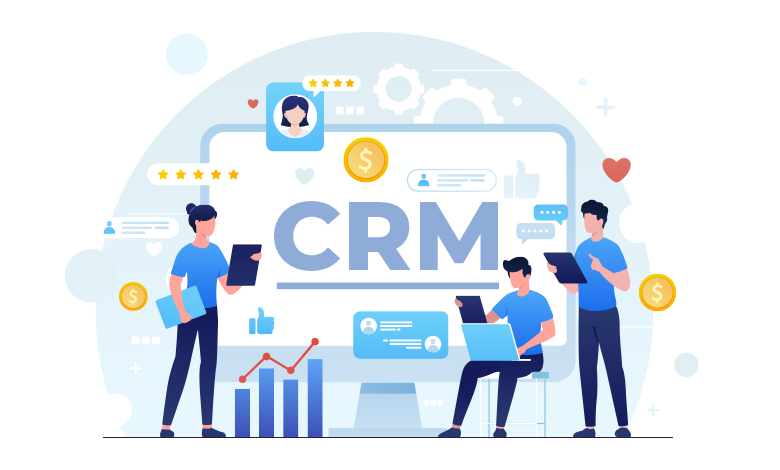Now that technology has a firm grasp on the way businesses stay alive and thrive, having access to the right ecosystem is critical for optimized operations. The right tool implies an ordered flow of data, which in turn means effective data harvesting.
Did you know that Salesforce CRM is a technology that manages all of your company’s relationships and interactions? This is not only limited to your customers but also potential ones from all stages of the conversion pipeline.
Integration platforms like Salesforce CRM have one simple goal. Its goal is to improve your business relationships and take your business to new heights.
But how can this be achieved?
In this article, we will walk you through Salesforce CRM integration services, middleware, synchronization, and so much more. By the end of this, you will have understood how the world’s #1 AI CRM software empowers companies of every size and industry to connect with their customers and maintain transformative relationships through the power of data.
Salesforce CRM Reporting
Before delving into the analytics, we need to curate the data. Businesses have lots of data in the form of client interactions, reports, inquiries, and other forms of data. When we look at the fundamental reporting environment of Salesforce, we see that creating the data is the preliminary component of this process. You can start by creating a report. Depending on the type of data that you want to analyze, you can choose the report type.
To expect better insights from Salesforce, the report data, which includes fields, groupings, etc., needs to be accurate. Once the report is set up, the real-time snapshots of your business are readily accessible in the form of a dashboard. All the reports created are accessible here.
This process is critical, as all the retrievable data for the analytics tool to use is accessible from here. Analytics is added as an intelligence layer for all of the Salesforce cloud based solutions.
Why You Need CRM Analytics.
Salesforce is on top of the new age of technology and their solutions only keep getting better. If we take a look at the new Salesforce CRM integration, it comes with advanced reporting and analytics features. All the business data from different departments is stored in one place.
Salesforce is on top of the new age of technology and their solutions only keep getting better. If we take a look at the new Salesforce CRM integration, it comes with advanced reporting and analytics features embedded.
All the business data from different departments is stored and accessible from a central repository. Einstein GPT can identify trends, track performance, and even predict future outcomes. You will be able to make decisions proactively rather than in a reactive manner.
What’s included within the CRM Analytics?
Lenses: Mechanisms that establish the principles of data storage.
Recipes: Predefined procedures used to generate workflows.
Datasets: Collections of data accumulated from Salesforce and various external sources.
Dashboard Templates: Defined layouts that include datasets and provide a visual representation of analytics data.
Stories: Narrative explanations of a dataset, providing statistical analysis and insights into trends and future predictions.
Drag-and-Drop Interface: The interface is so seamless that all you need to do is drag and drop for business use cases such as sales performance dashboards, lead conversion analysis, customer lifetime value analysis and much more.
Security Features: CRM Analytics supports web authentication and allows tracking of insecure login flows through real-time event monitoring.
Service Intelligence: Gain insights into service operations. Monitor and identify areas of improvement.
Data Points to Monitor with CRM Analytics
Predicting the Future Sales Path.
By using state of the art predictive algorithms, you will be able to stay prepared. Be it to manage inventory, or to optimize your business strategy, you will have all the information that you need to make informed decisions.
Track and Supercharge Marketing Efforts
As a marketer, what would you care about the most? If you thought ‘conversions’, you are not alone. But is there any nuanced way to increase conversions? By using CRM analytics, you will be able to identify which marketing channels are the most effective for launching campaigns. Moreover, tracking which channels would be the most effective and what type of campaign would increase the probability of success is what CRM analytics is awesome at. It’s now possible to optimize the marketing strategies targeted specifically for higher conversions or increased awareness.
Customer Service Optimization
Using AI enabled customer service operations, businesses can drastically enhance their services and engagement. By tracking and monitoring service metrics, CRM analytics will give you the information you need to proactively act, rectify, and enhance the service operation. Moreover, the workload is reduced as it will automate mundane and repetitive tasks and automatically respond to and resolve generic queries, which leaves customer service executives with more time. When they do come to resolve a client issue, they will have all the information they need to address the issue quickly. This dramatically increases response times and customer satisfaction scores.
Winding Up
With tons of digital data necessary for effective business operations, not organizing and collecting data for further analysis can fall under the idiocy realm. Cartridges of printers have begun lasting longer at offices globally, as all-digital, end-to-end processes and solutions have emerged that make paper obsolete. With Analytics CRM, businesses of all scales can grow optimally and rapidly. Drawing data-based feedback and making data-oriented decisions is key to optimizing business processes effectively by making use of state-of-the-art technology. Elevate your business principles by adapting to the data age with Salesforce Analytics CRM.




